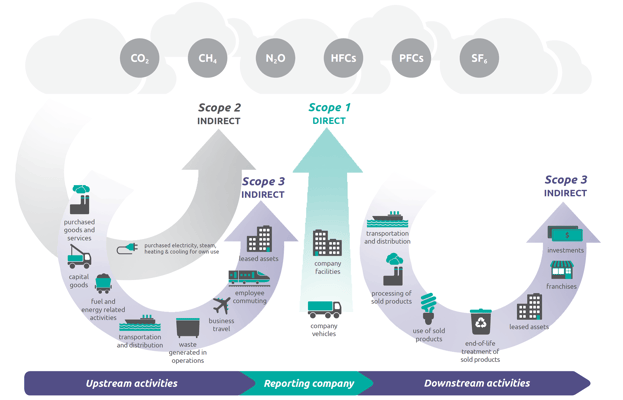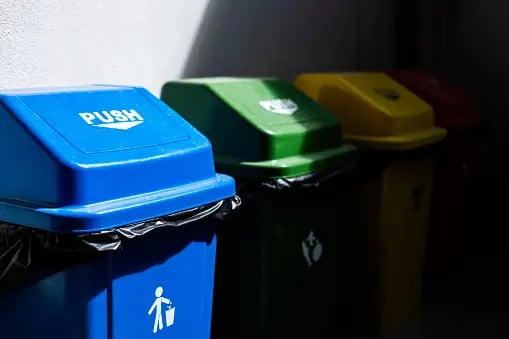After the commotion and commitments at COP26, there has been much discussion on what’s next for global climate action and how to align action with the goals of the Paris Agreement.
At Rio, we believe transitioning to a circular economy is an imperative part of tackling the climate crisis. However, the importance of a circular economy can often be overlooked in business and organisational strategies.
It's true that net zero is fundamental, and we hope you’re on your net zero journey or about to embark on it (if you need a hand, we have a ten step to net zero guide), but here we’ll explore why circularity shouldn’t be left behind.
What is a circular economy?
Circular economy is not just about recycling. It is an industrial model of production and consumption that is restorative and regenerative by design and intent. This involves sharing, leasing, reusing, repairing, refurbishing, and recycling existing materials and products for as long as possible. In this way, we can extend the life cycle of products.
This contrasts to the way linear economies are set up, where most things are made, used and thrown away, and planned obsolescence encourages consumers to buy products more frequently.
This ‘throwaway’ lifestyle negatively impacts our planet by producing large amounts of waste, negatively contributes to the climate crisis, and can be seen as an environmental externality.
Why do we need a circular economy?
A shift towards a circular economy is crucial to achieving the Paris Agreement goals. Designed circularity reduces the rate of extracting finite resources faster than they can be replenished, as well as significantly reducing waste production that pollutes our land, water, and air.
Building a circular economy means changing the way we design, make, use, and dispose of products and materials as well as how we use the land. In March 2020, the European Commission introduced a new Circular Economy Action Plan (CEAP), setting out actions and objectives to help Europe achieve a cleaner and more sustainable future. It addresses how products are designed, encourages sustainable consumption, and aims to ensure that resources are kept in the EU economy for as long as possible.
The circular economy and the Paris agreement
As you are probably aware, the UK hosted the 26th Conference of Parties (COP26) in Glasgow from the 31 October to the 12 November 2021. The conference is a key opportunity for the 197 parties to the UNFCCC (United Nation’s Framework Convention on Climate Change) to discuss how climate change will be tackled and to agree on global and national targets.
When people discuss the Paris Agreement, the focus tends to be on directly reducing greenhouse gas (GHG) emissions via renewable energy, but this laser focus can create a myopia that forgets other contributing factors. When it comes to the climate crisis, a holistic approach is necessary.
Moving to renewables can address an estimated 55% of global GHG emissions, but to address the not insignificant 45%, we need to be looking at other major contributors, including strategically using and reusing materials and land. In other words, a circular economy can help to address global GHG emissions, bringing us closer to the goals of the Paris Agreement.
Some industry-specific examples of a circular economy
Circular agriculture focuses on using minimal amounts of external inputs, closing nutrients loops, regenerating soils, and minimising the impact on the environment. The integration of reusing irrigation water, agroforestry and mixed farming systems helps reduce CO2 emissions, use natural resources more efficiently and cut the use of inputs significantly.
For example, using wastewater in agriculture can irrigate up to an additional 40 million hectares of all irrigated land. The National Water Strategy of Morocco has shown the benefits of using wastewater and how it can strengthen circular agriculture. The use of high-quality wastewater sourced from a treatment plant in Tiznit has enhanced food and nutrition security for farmers. Crop yields have also increased as wastewater brings fertilised nutrients, saving inputs. The rising production of crops has meant increased income for farmers, in turn reducing unemployment and poverty in the area.
Within the concrete and cement industry, the circular economy can be embedded within design. For example, Design for Disassembly (DfD) is the design of buildings to facilitate future changes and building deconstruction. When in place, buildings to be dismantled more easily, and materials can be reused. This reduces the consumption of raw materials and lowers waste during construction, renovation, and demolition.
The circular economy can also play a prominent role within the mining and metal sector. Including using byproducts to create other materials in the smelting and refining stage by increasing the recovery of co-products. When producing copper, a wide range of other metals such as molybdenum, gold, silver and selenium can also be recovered from the copper ores. Capturing these co-products helps avoid the need to for additional mining processes. Using byproducts of mining helps reduce the production of waste and helps strengthen mining circularity. Waste rock alone can be used as backfill, landscaping material, and in road construction.
The shift to circularity
A transition to renewable energy is a fundamental part of slowing climate change, yet we know it is only one part of the equation of the necessary systemic and holistic approach.
Another key part of this equation is the circular economy, with huge potential to reduce the waste and the use of fossils fuels. To meet the Paris Agreement goals, organisations need to carefully assess their supply chains, measure their impact, and then think circular to transform them into supply loops.
“Thinking circular” means organisations are re-using, re-pairing, and re-cycling existing materials and products. As the economic, regulatory and societal demands for a sustainable future for all accelerates, a transition to a circular economy is essential to prevent further environmental damage, resource depletion and rising global temperatures, all the while creating opportunities for innovation, investment and better business practices.
Want to understand your impact? Use Rio for integrated utility and resource reporting.
If you're interested in understanding your utility and resource use, Rio’s intuitive interface enables you to track resource usage across electricity, waste, transportation, and more.
With pre-configured utility and resource reports, users can easily visualise performance year over year, compare KPIs to absolute and intensity targets, and forecast into the future. Users can also drill down with detailed filters and normalisers such as per FTE or per unit currency.
Learn more, or contact us today to book a meeting.









